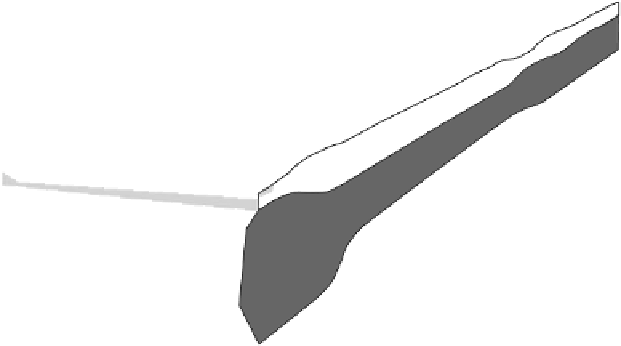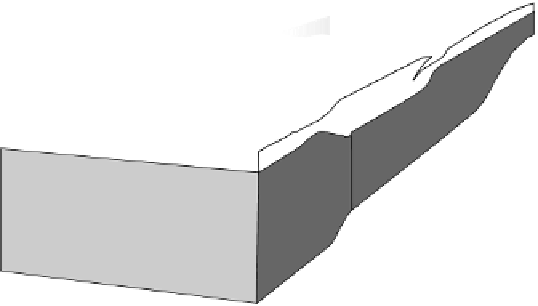Geoscience Reference
In-Depth Information
33 km thick crust
Gangdese
(a) Late Cretaceous (70 Ma). Indian oceanic plate
subducting under the Asian continent, scraping off
oceanic sediments and creating the Gangdese
magmatic arc to the north
Xigatse
Tsangpo
suture
(b) Middle Oligocene (36 Ma).
Indian continental lithosphere
collides with Asia to create
Tsangpo suture; lithospheric
thickening propagates north;
sediment provided by
denudation of the nascent
Himalaya is deposited in the
thrust-fault bounded
sedimentary basins to the north
and south
65 km
Main Boundary
Thrust fault
(c) Middle Miocene (11 Ma). Tibetan
Plateau at
c
.3 km elevation above
thickened lithosphere; active
shortening results in widespread
thrust faulting across Plateau with
strike-slip faulting at northern margin
(d) Pleistocene (1 Ma). The thick
lithospheric “root” under the Tibetan
Plateau sinks into the asthenosphere
causing rapid and regional uplift to
c
.5 km mean elevation. Whole
Plateau begins to extrude laterally,
releasing gravitational potential
energy by widespread normal
faulting
2 km
Fig. 5.45
Continental shortening deformation on a grand scale: development of the collision of the Indian and Asian plates along the
Himalayan mountain belt and the uplift and sideways collapse of the high Tibetan Plateau.












































































































































































































































































































































































































































































Search WWH ::

Custom Search